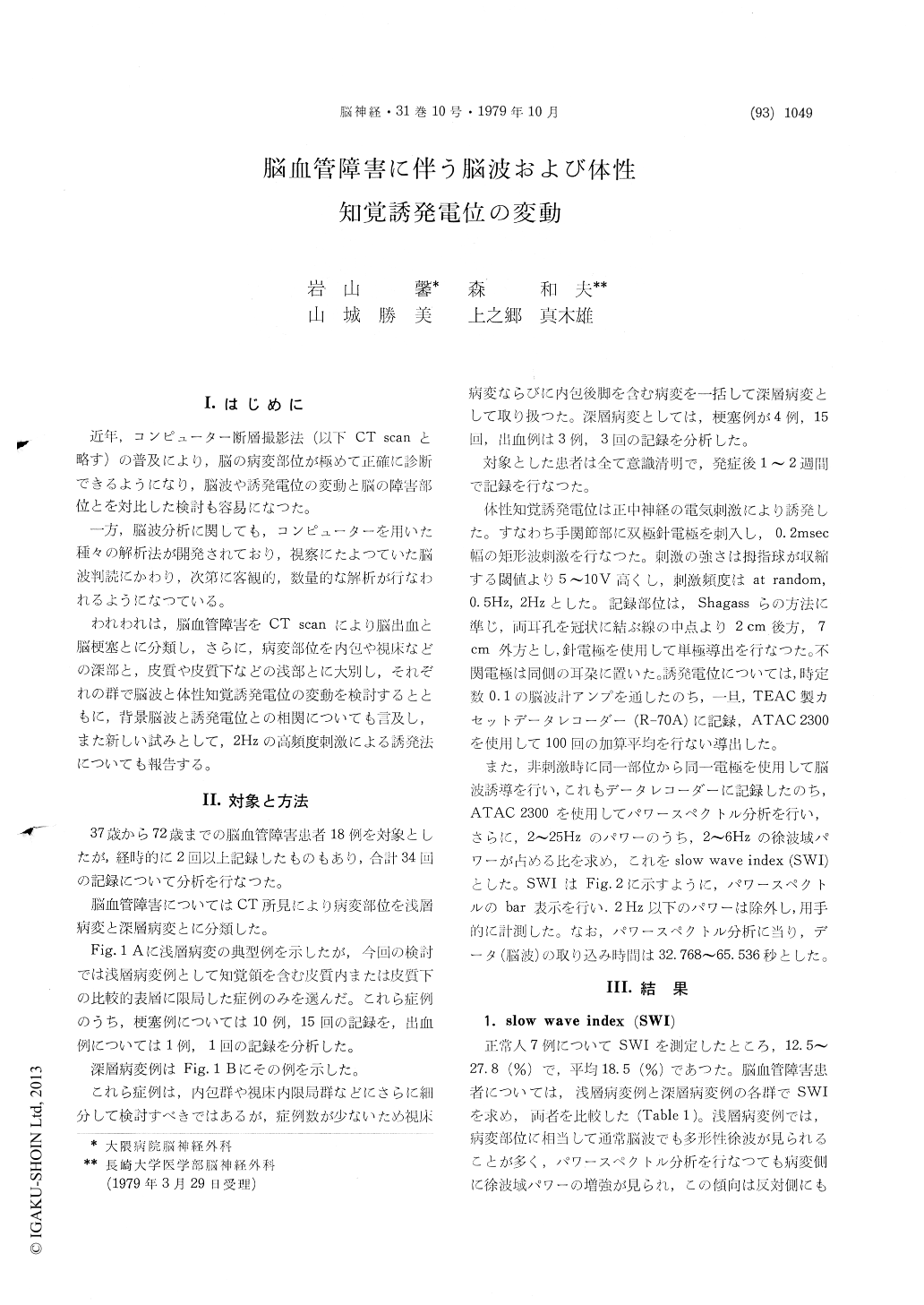Japanese
English
- 有料閲覧
- Abstract 文献概要
- 1ページ目 Look Inside
I.はじめに
近年,コンピューター断層撮影法(以下CT scanと略す)の普及により,脳の病変部位が極めて正確に診断できるようになり,脳波や誘発電位の変動と脳の障害部位とを対比した検討も容易になつた。
一方,脳波分析に関しても,コンピューターを用いた種々の解析法が開発されており,視察にたよつていた脳波判読にかわり,次第に客観的,数量的な解析が行なわれるようになつている。
Changes in electroencephalograms (EEGs) and somatosensory evoked potentials (SEPs) were studied in 34 cases with unilateral cerebrovascular disorders, and relationships between background activity of EEGs and SEPs were discussed. From the findings obtained by CT, the location and nature of diseases were identified. The authors dividedlesions in two, superficial (within the cortex and subcortical white matter) or deep (at the level of basal ganglia and thalamus). Each of these was further subdivided in two, hemorrhage or infarc-tion, respectively. EEGs and SEPs were recorded from the scalp corresponding to the post-Rolandic arm area (Shagass' point). SEPs were elicited by the median nerve stimulation and throughout the investigation, the stimulus intensities were fixed at 5-10 V. higher than motor threshold. EEG signals were quantified by means of digital spectral analysis, and slow wave indices (SWI), ratio of power at 2-6 Hz to that of 2-25 Hz, were calcu-lated manually.
The following results were obtained.
In the cases of superficial lesions, SWI increased bilaterally, especially in the affected side. Con-trariwise, in deep lesions, no remarkable increase were detected.
In SEPs, marked changes were recognized in the cases of deep lesions, and changes were less re-markable in superficial lesions. Changes were more prominent in the cases of hemorrhage, as compared to those infarction.
In the cases of superficial lesions, the correlation coefficients were calculated statistically betweenbackground activities of EEGs and components of SEPs.
Negative correlations were detected between SWI and amplitudes of each component of SEP. It was maximum at a value in N1, but there were no significant correlations between SWI and the latencies of SEPs.
In the intact side, however, no correlations were noted between SWI and both latencies and ampli-tudes of SEPs. It was suggested that, although EEG showed a slowing bilaterally, background mechanismus of slowing in the affected side might differ physiologically from that in the intact side.
Comparison was made with amplitude of SEPs elicited either by 2 Hz or 0.5 Hz stimulation. In normal subjects, amplitude of early components of SEPs, such as N1 and N2, increased definitely with 2 Hz stimulation. However, these facillitatory in-fluences were not detected in the cases of super-ficial lesions. SEPs elicited by 2 Hz stimulation were to be related to the recovery function, and the stimulating method with different frequencies was of value to detecting minute functional altera-tions along with the sensory pathways.

Copyright © 1979, Igaku-Shoin Ltd. All rights reserved.


